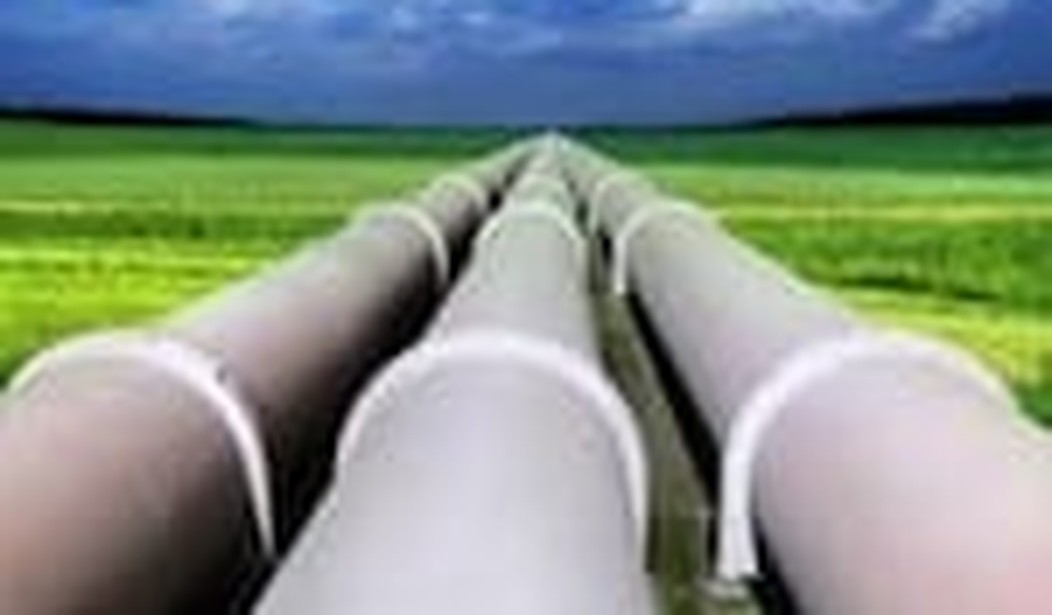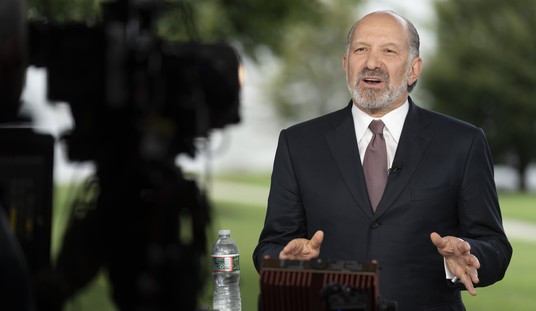It is crucially important to the security and prosperity of the United States and Canada that President Obama approve the Keystone XL pipeline, a multibillion dollar project to bring Albertan oil sands bitumen to refineries in Texas. However, with loud, well-funded climate activists in his base opposed to XL because it will encourage expansion of the oil sands, a project they are determined to kill, it is anything but certain that the president will give the green light to the pipeline.
More than anything, Obama does not want to be remembered as the president who “ruined the climate.” That science shows that practically nothing America does will have substantial impact on global climate is immaterial; it is all about perception when it comes to presidential legacies. Consequently, oil sands and pipeline supporters must present arguments that are seen to be unquestionably correct and difficult to defeat, and relate directly to Obama’s main concern — climate change. Otherwise, he will almost certainly turn down the project just as he did last year.
In the past week, pipeline proponents have seized upon the conclusion of the report by energy consultancy IHS CERA Inc. that the project will have “no material impact” on oil sands greenhouse-gas (GHG) emissions. But IHS’s arguments — which were essentially the same as those made by the State Department several months ago — should not be used.
They are far too easy for pipeline opponents to counter.
IHS asserted the following in a news release about the report:
In the absence of the pipeline, alternate transportation routes would result in oil sands production growth being more or less unchanged.
That is naïve. IHS is apparently assuming that climate change campaigners will be unsuccessful at blocking other proposed oil sands bitumen transportation-system expansions. In reality, all of these plans — Enbridge’s Northern Gateway pipeline to Canada’s west coast, the expansion of the Kinder-Morgan pipeline (also to the B.C. coast), Energy East pipeline across Canada, and expanded rail transport — are under serious threat due to the actions of activists. Their disdain of new pipelines is well known, but few in the public are aware that environmentalists are fighting rail expansion as well. The Sierra Club, Greenpeace and 14 other environmental groups warned the head of CN rail in an open letter in January:
Should CN decide to try to move forward with its proposal, it would face major opposition and risks to the company. We urge you to stop any forward movement with shipping tar sands oil by rail through British Columbia.
Their opposition is not surprising. Climate campaigners want to stop all methods of transporting bitumen to refineries because they are determined to block Canada’s oil sands projects entirely. They believe GHG emissions, specifically carbon dioxide (CO2), from the oil sands will wreck the climate.
IHS also stated in their news release:
The study also found that any absence of oil sands on the U.S. Gulf Coast (the destination for Keystone XL) would most likely be replaced by imports of heavy crude oil from Venezuela, which has the same carbon footprint as oil sands.
That is misleading. One of the benefits of Keystone XL, as the U.S. Department of Energy (DOE) says, is lower gasoline prices. This is to be expected when supply expands and diversifies. With lower prices, consumption will likely rise and so will total CO2 emissions. And it is total CO2 emissions that determine the nation’s overall “carbon footprint.”
The IHS report itself gives a more sophisticated explanation, one that is technically correct — but irrelevant. They assert:
The most likely alternative USGC heavy oil supply is Venezuelan crude which is in the same GHG emissions range as oil sands. Consequently, if oil sands were not consumed in the Gulf Coast, there would be little to no change in the overall GHG intensity of the U.S. crude slate.
IHS defines GHG intensity as the amount of CO2 released per barrel of oil when taking into account “all emissions associated with crude oil production and use, including extracting, refining, transporting, and ultimately consuming the fuel in a vehicle,” a measure they call “well-to-wheels GHG emissions.” They note: “Depending on the crude oil, 70–80% of the well-to-wheels emissions occur when gasoline is combusted in a vehicle.”
But it is not just GHG intensity that determines overall emissions. It is also the total amount of oil that is combusted in all vehicles using the fuel. As explained earlier, with lower prices predicted by DOE, consumption — and so the total “carbon footprint” — will almost certainly rise, all other factors being equal.
The strongest reason for Keystone XL is that it greatly enhances U.S. energy security by replacing oil imports from unfriendly dictatorships with oil from Canada. And whether one believes in dangerous CO2-driven climate change or not, virtually all experts agree that the climatic impact of oil sands expansion is negligible since the project produces only about one thousandth of humanity’s total emissions.
Media often quote Obama’s June 25 Georgetown University climate change speech:
Our national interest will be served only if this project [XL] does not significantly exacerbate the problem of carbon pollution.
This was doublespeak designed to frighten. The gas that supposedly concerns the president is CO2, which is in no way a pollutant. Regardless, it is not CO2 that concerns Obama; it is dangerous climate change. This was illustrated by the next sentence in his speech:
The net effects of the pipeline’s impact on our climate will be absolutely critical to determining whether this project is allowed to go forward.
So the key to appeasing Obama is convincing him that an overwhelming majority of the public believes that “the net effects of the pipeline’s impact on our climate” will be negligible.
Most politicians and industry leaders will not contest the politically correct but scientifically improbable hypothesis that humanity’s CO2 emissions are causing dangerous anthropogenic global warming (DAGW). They dare not risk being labeled climate change deniers by activists and media for fear that this would expose them to ridicule and encourage Obama to reject the pipeline again.
But there is a safe approach that Canada’s government and those of the provinces and states involved could take that would directly address Obama’s concerns. They could convene open, unbiased hearings in which leading experts are invited to testify about the climatic impact of the pipeline and consequent oil sands expansion.
Some scientists would testify that they agree with the DAGW hypothesis and some would directly oppose it. But most of the expert witnesses would probably explain that the science is not advanced enough to come to a definitive conclusion. However, all of them, even DAGW supporters, would have to admit that the climatic impact of oil sands projects is negligible.
Governments and industry should then strongly promote the hearings’ findings throughout the U.S. and Canada so that the public would come to understand the true consequences of oil sands expansion. Dr. James Hansen’s assertion that growth of the project will result in “game over” for the climate would then be widely seen as ridiculous. Obama’s climate concerns would be addressed, making it far easier for him to approve the pipeline.
Our leaders must have the courage to defend Keystone XL and the oil sands with intelligence and integrity. Otherwise, the projects will fail, climate campaigners will be further emboldened, and the U.S. and Canada — and indeed the whole developed world — will continue our long decline into energy poverty.









Join the conversation as a VIP Member